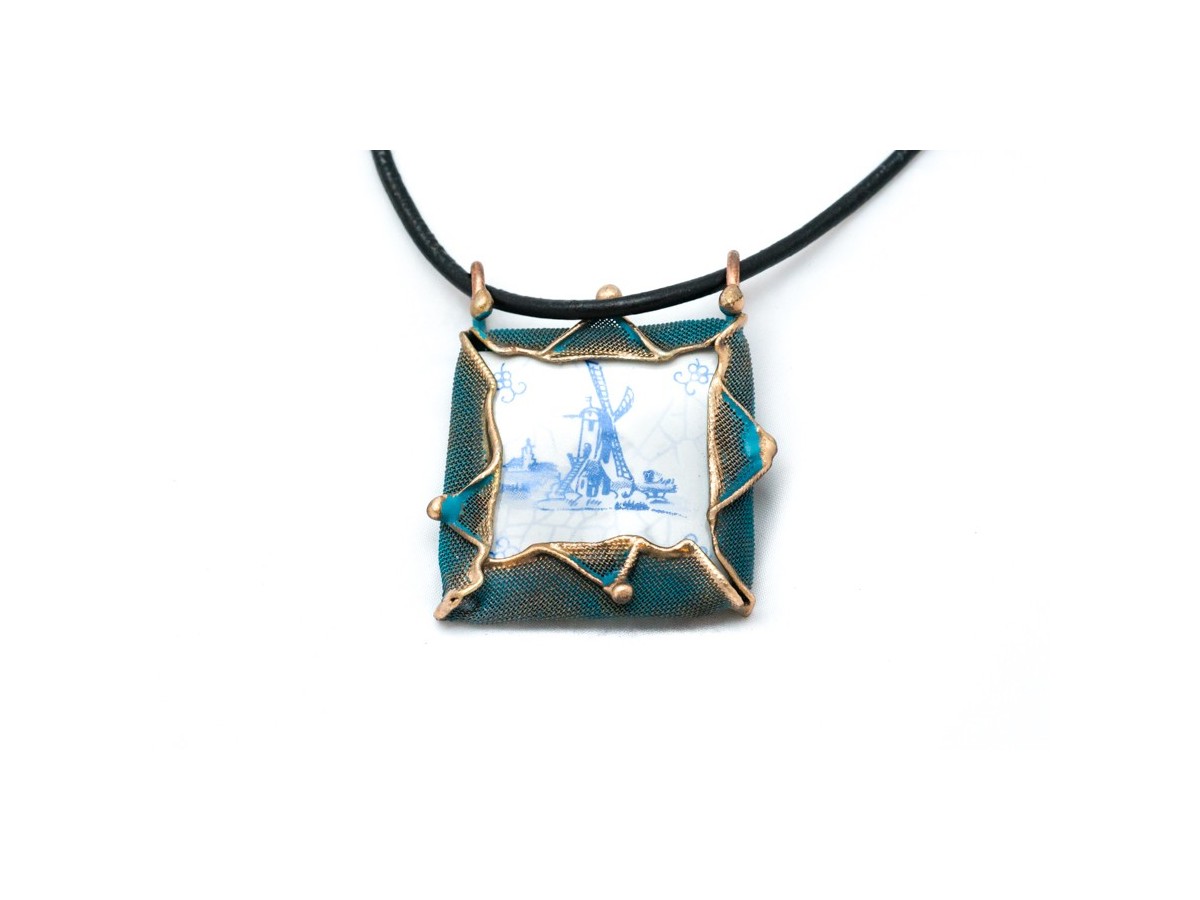

Porcelain mill
A unique handmade necklace of aged bronze with a blue porcelain ornament. The bronze achieves its blue-green hue through a special patination technique. It serves perfectly as a memorable gift for 8th (bronze) wedding anniversaries.
- Pendant dimensions 4.5x4.5 cm (1.77x1.77 inch)
- Length of natural (black) leather (with clasp) 59 cm (23.23 inch)
Porcelain
The first porcelain vessel – a vase – was brought to Europe from the homeland of porcelain, China, in 1295. It was brought along the Silk Road by the Venetian merchant and traveler Marco Polo. At present, it is kept in the lobby of the Cathedral of St. Mark in Venice.
Over the centuries, porcelain from China spread throughout the world, but this journey was not very fast or easy – everyone guarded the technology of porcelain production. The country that discovered paper, silk, and gunpowder thrived during the Ming Dynasty (1368-1644), and porcelain became its most important export commodity. There is no consensus on the exact date of the invention of porcelain, but it is believed to have occurred during the Shang Dynasty from 1600-1045 BC or even in the 4th century BC.
According to some historical sources, revealing the technology of porcelain production or the composition of this material was punishable by a cruel death penalty. If even the slightest suspicion arose that a master could betray it, he was burned alive in the kiln.
Nevertheless, hard porcelain began to be produced in Korea in the 15th century, and in the 17th century – also in Japan by the same Koreans. Porcelain imported to Europe from China and Japan was in great demand, making an indelible impression on Europeans, and therefore was very expensive. Thus, aristocratic families of that time, having employed the most skilled alchemists, persistently tried to unravel the secret of white gold. Unfortunately, no one succeeded until 1708. Neither the Italians, the first to import porcelain artifacts to Europe, nor the French, who secretly sent Jesuit monks to China to learn its production secrets, nor the diligent English craftsmen. For example, Italian porcelain, produced in Florence in the 16th century and named "Medici," still resembled matte glass more than the coveted white material.
- We lacquer our jewelry with a special lacquer to prevent oxidation.
- However, we still recommend avoiding direct moisture.
- We package our jewelry in branded kraft boxes, so you can give the jewelry as a gift right away.
- It is impossible to repeat and create an identical second piece of jewelry.
- Therefore, each of our pieces of jewelry, like this one, is a unique work of art.
Product Details
Data sheet
- Metal
- Bronze
- Who?
- Womens
In the same category
Brass surrealism
Handcrafted original brass necklace with a natural leather cord. This accessory is a unique adornment for women who appreciate exclusivity. Each of our creations is one-of-a-kind, making it a separate work of art.
- Pendant size 10x7 cm (3.94x2.76 inch)
- Length of natural black leather cord 45 cm (17.72 inch)
Strong angel
An original handmade bronze brooch is an original piece of jewelry that will complement your style by harmoniously combining it with a scarf, coat or dress. It is a special choice of gift for both women and men, adding delicacy and uniqueness to your look. Get this brooch now and add a touch of uniqueness to your wardrobe.
- The size of the brooch is 7x7 cm (2,76x2,76 inch)
- -€10.00
- Out-of-Stock
Thin braided design 0.3 cm
Handcrafted pure copper bracelet. The unisex design makes it perfect for both men and women. Its uniqueness comes from the thin braided design. Very comfortable for everyday wear, and the open end allows for adjustment of the bracelet's size. Made from thick copper wire, it is very sturdy and retains its shape. Looks stylish when worn with other bracelets (leather or stone).
- Bracelet width: 0.3 cm (0.12 inch)
- Choose the bracelet circumference below.
The red eye
Handmade, designer earrings made of dark bronze with a red glass bead. The earrings are elegant, plastic, light, and at first glance it is difficult to tell whether they are made of fabric or metal. A unique design for lovers of exclusivity.
- Earring size: 4x3 cm (1,57x1,18 inch)
Chalcopyrite crystal ring no. 6
Handcrafted bronze ring adorned with unique ornaments and a natural chalcopyrite crystal. The trendy ring design is suitable for both parties and gatherings with friends. An original adornment and gift for any significant occasion, including 8th bronze wedding anniversaries.
- Ring size: 19-22
Green agate flowers
One-of-a-kind handmade bronze earrings. Allow yourself to enjoy the beauty and craftsmanship of these exquisite, flower-shaped earrings. Enticing green agate eyes add sophistication and elegance, ensuring these earrings will become a treasured part of your collection. Whether worn to express your individuality or as a luxurious 8th wedding anniversary gift, these earrings embody exquisite femininity.
- Earrings size 2,5x2,5 cm (0,98x0,98 inch)
- Length of earrings with clasp 4 cm (1,57 inch)
- Out-of-Stock
Angel Vytis
Handcrafted artisanal melchior necklace. An angel-shaped pendant covered in patina with the Vytis and Gediminas Tower. A perfect souvenir with Lithuanian symbolism. It can be worn as a necklace or used as a keepsake to decorate any interior. The special patination technology gives the nickel silver a new greenish hue. This is your guardian angel! An ideal gift for christenings, weddings, housewarmings, Christmas, and bronze wedding anniversaries.
- Pendant size 9x4 cm (3.54x1.57 inch)
- Length of natural leather cord 90 cm (35.43 inch)
Rose quartz
Handmade brass bracelet with natural rose quartz stones. The bracelet is elegant and minimalistic, so it is suitable for any occasion. It is a one-of-a-kind design for a woman who appreciates exclusivity.
- The diameter of the stone is 0,8 cm (0,31 inch)
- The circumference of the bracelet around the wrist is 19-21 cm (7,48-8,26 inch)
Smaller buds
Handmade Melchior and bronze earrings for women who appreciate exclusivity and originality. The Melchior base and shiny bronze details add sophistication and luxury. The round shape provides a sense of lightness and is a favorite among women. A perfect gift for even the most special occasions.
- Earring diameter 1.5 cm (0.59 inch)
- Out-of-Stock
Viewed products
Soft purple crystal
Original handmade bronze bracelet. Decorated with soft purple natural amethyst crystal. A bracelet with a luxurious and ornate design for a lady who loves exclusivity. And also a great gift for the 8th (bronze) wedding or other important occasions.
- Bracelet width 4 cm (1,57 inch)
- The bracelet is adjustable from 17-20 cm (6,69-7,87 inch)
Smaller buds
Handmade Melchior and bronze earrings for women who appreciate exclusivity and originality. The Melchior base and shiny bronze details add sophistication and luxury. The round shape provides a sense of lightness and is a favorite among women. An original gift idea for a bronze wedding anniversary.
- Earring diameter 1.5 cm (0.59 inch)
Write your review
Review sent
Your review cannot be sent

A unique handmade necklace of aged bronze with a blue porcelain ornament. The bronze achieves its blue-green hue through a special patination technique. It serves perfectly as a memorable gift for 8th (bronze) wedding anniversaries.
- Pendant dimensions 4.5x4.5 cm (1.77x1.77 inch)
- Length of natural (black) leather (with clasp) 59 cm (23.23 inch)





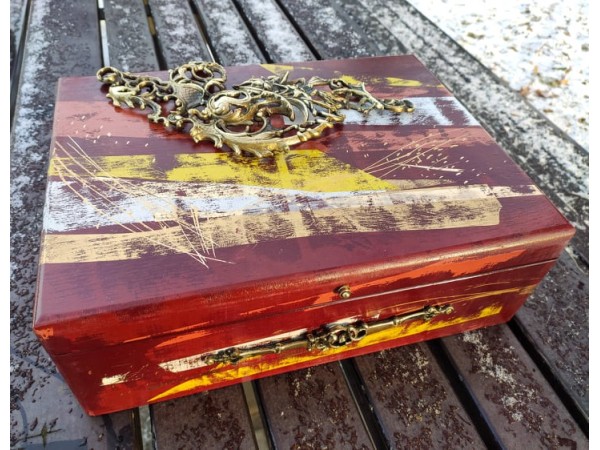


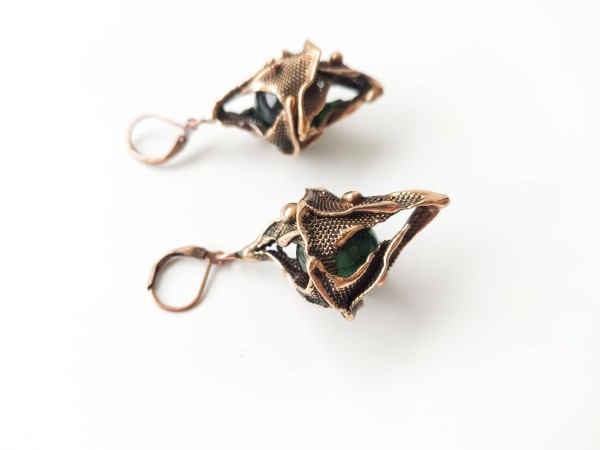


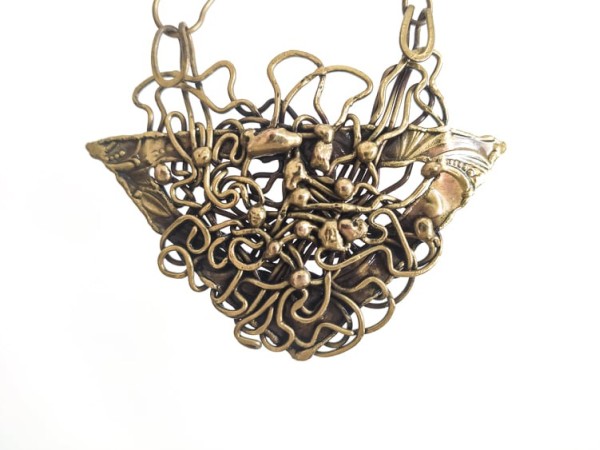


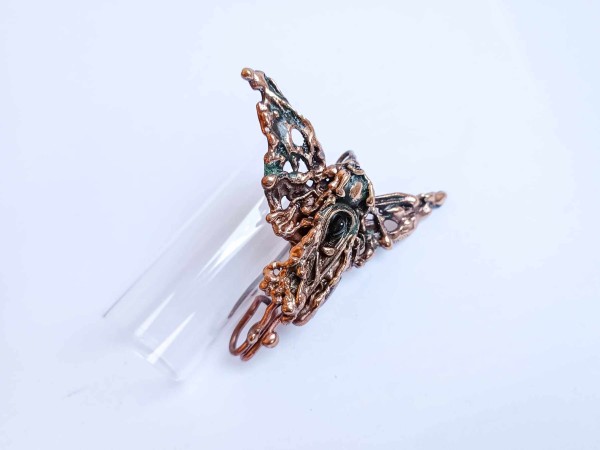


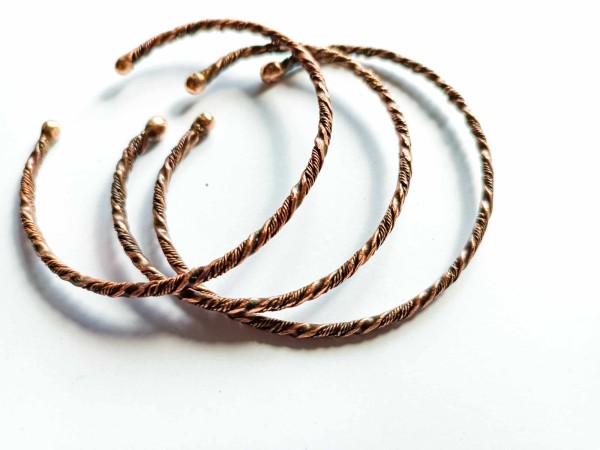


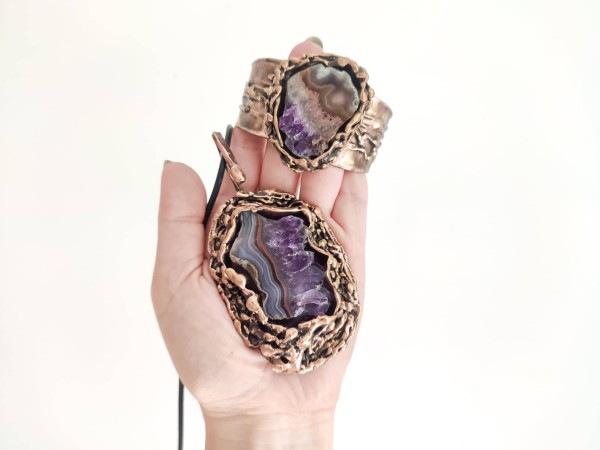



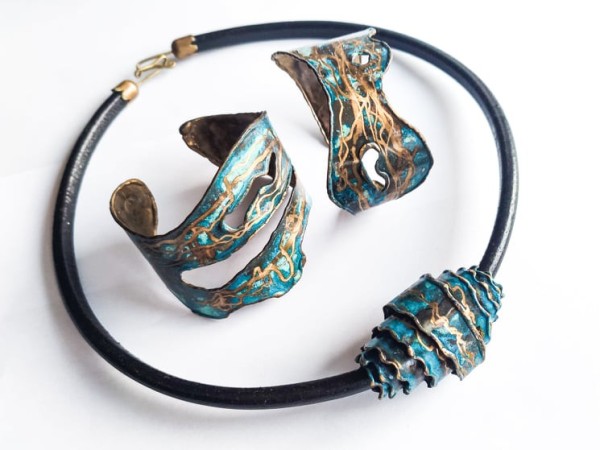


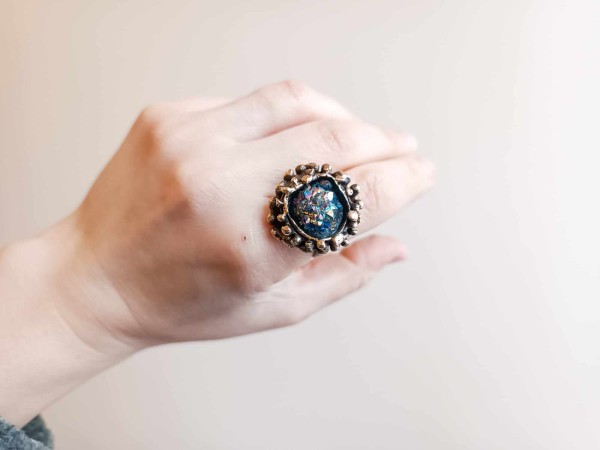


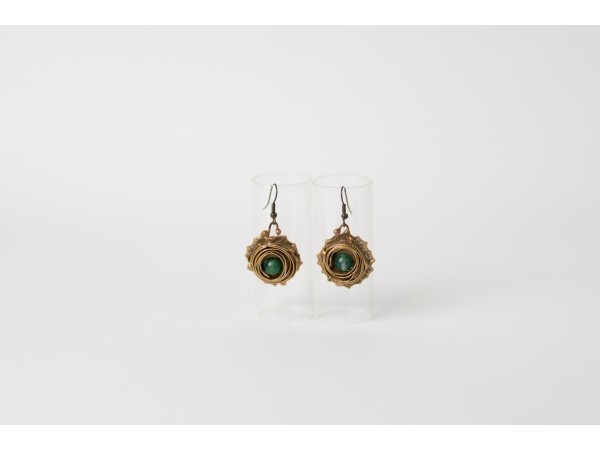


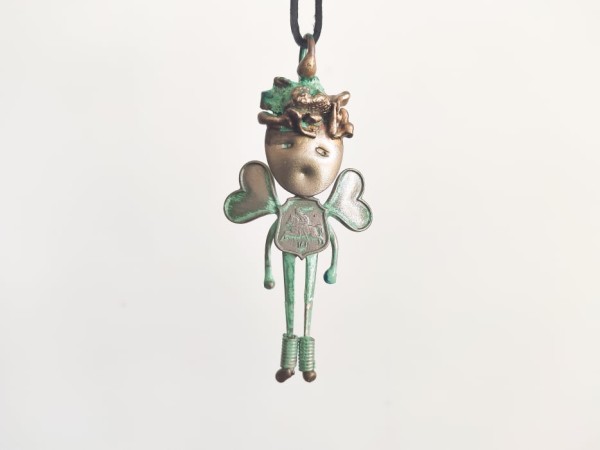


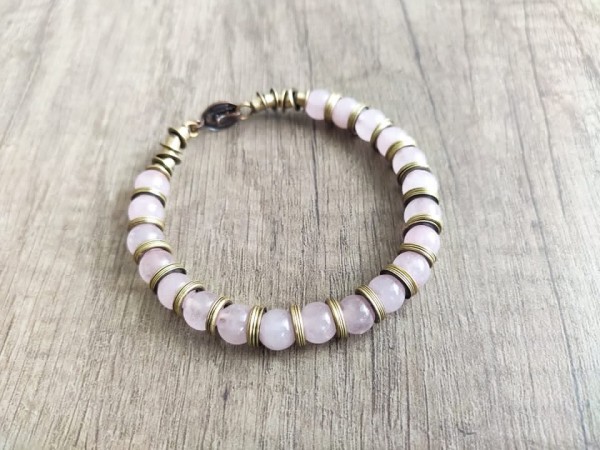

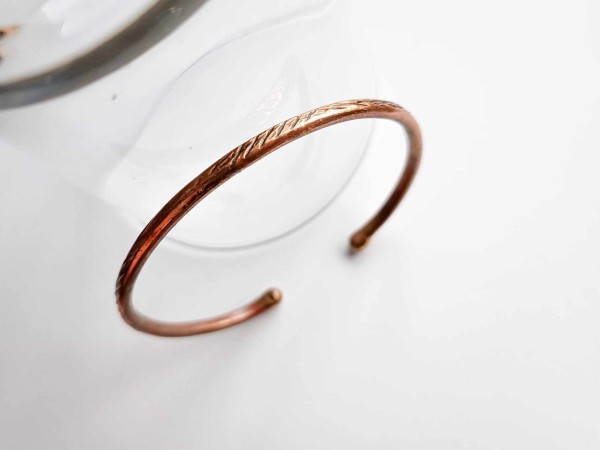





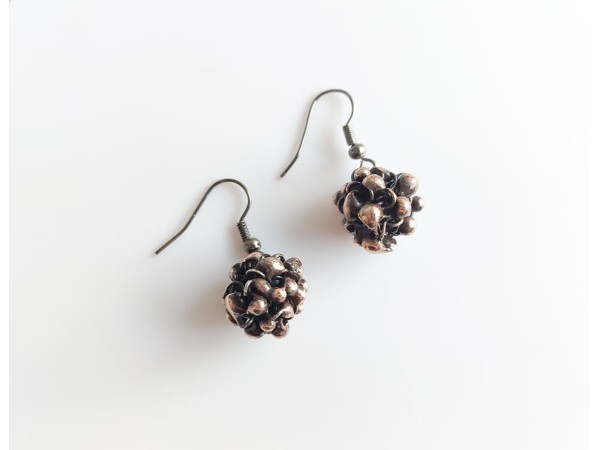


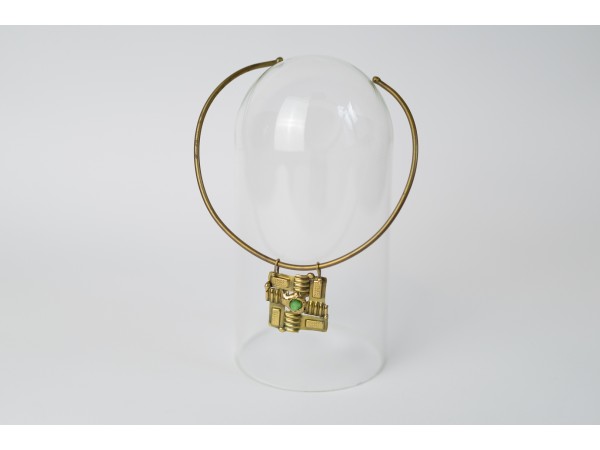


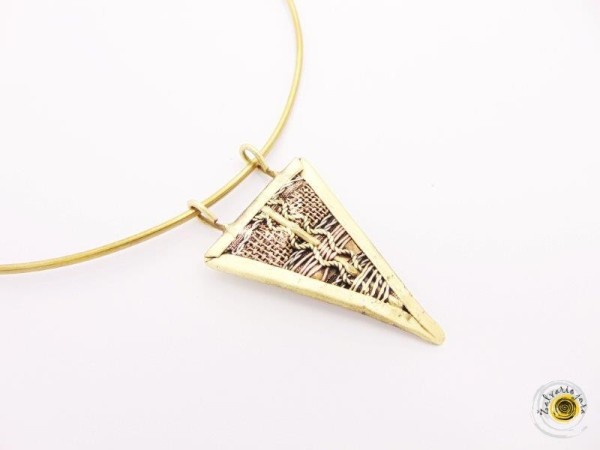


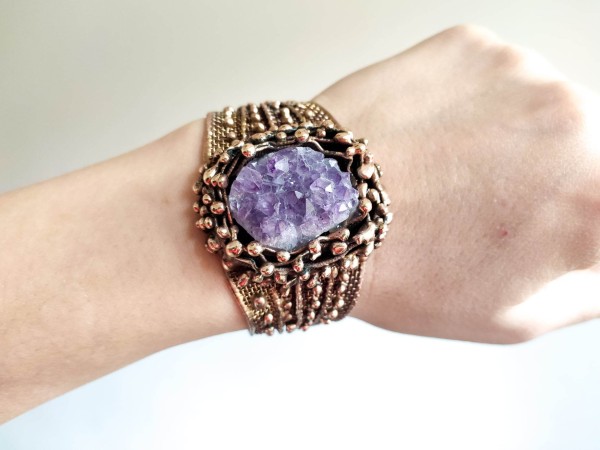



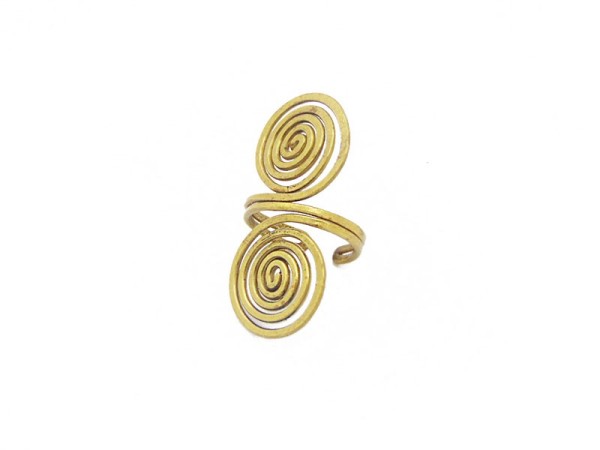

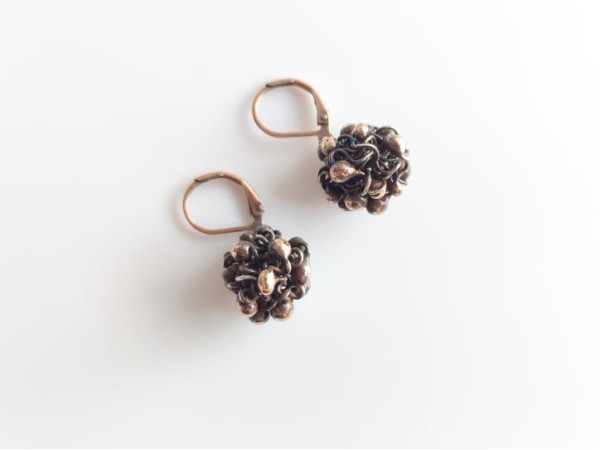


Product Comments
Your review appreciation cannot be sent
Report comment
Report sent
Your report cannot be sent